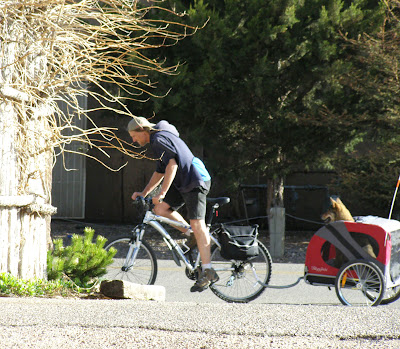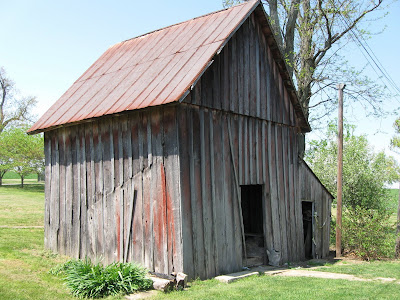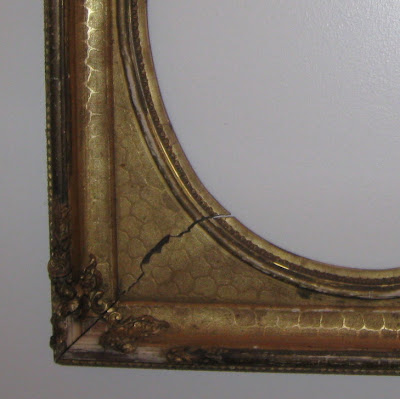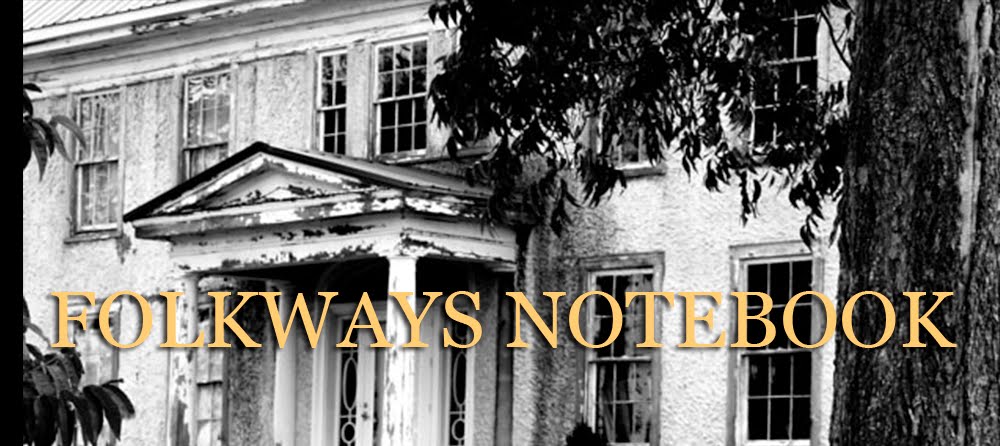Now that Memorial Day is almost over I finally started thinking about what Memorial Day stands for in the U.S. If you know -- fine-- I am not going to talk much about the definition. I am going to talk about what went through my head on this, holiday! Hey, didn't many of our employed work force just get a three day holiday because of Memorial Day -- as well as the students that are still in school before their summer break. Holiday is defined as a time of pleasure. Yes, it's holiday time -- get out the barbecue paraphernalia, RV, jet skies and party down. Hmm -- so this is what it means to many Americans -- fun and games. Well yes, according to part of the Wikipedia definition, Memorial Day is now traditionally the beginning of the summer recreational season!
Now I detest war -- to let you know where I stand. I am not coming down on the true meaning of Memorial Day or Decoration Day as it once was called before the Uniform Holiday Act combined the day with a weekend so we could celebrate it with three days of pleasure, right? If the holiday is for the soldiers that gave their life for the country why don't we acknowledge it in an honorable way.
Wouldn't my great uncle be surprised to know that his death in WWI is celebrated with picnics, rowdiness, boastfulness by politicians, crammed highways, and little honest acknowledgment of the true meaning of the day. Are we a country of hypocrites?
OK, I will lighten up a bit and turn to the guys in the following youtube that have patriotism all wrapped up in a nutshell -- the Muppets.
Monday, May 31, 2010
Saturday, May 29, 2010
KENTUCKY BACK-COUNTRY COTTAGE STYLE HOME -- SUNDAY SIMPLICITIES
 An old 1940ish metal gate that only swings one way -- into the charming flower filled yard of the Wheats. An old railroad spike assures the gate's one way swing.
An old 1940ish metal gate that only swings one way -- into the charming flower filled yard of the Wheats. An old railroad spike assures the gate's one way swing.My definition of a cottage style home in the back-country is several of the following; a vintage house, snugly planted flowers, an old fence surrounding the yard, informality, non-contrived, and a comfy feeling.
 A view from the front of the home looks out on what was once tobacco farm land farmed by the Wheat family. Tobacco farming came to a halt for many farmers through government buy-outs a few years ago.
A view from the front of the home looks out on what was once tobacco farm land farmed by the Wheat family. Tobacco farming came to a halt for many farmers through government buy-outs a few years ago. The small yard surrounding the home is stuffed with plantings of all types. Right now the roses are putting on a show of color. The wooden ladder trellis is needed for support by the roses that rise high into the air. The barn in the background of this photo is the old tobacco barn.
The small yard surrounding the home is stuffed with plantings of all types. Right now the roses are putting on a show of color. The wooden ladder trellis is needed for support by the roses that rise high into the air. The barn in the background of this photo is the old tobacco barn. Red roses climb the old fence and reach high with the support of the homemade wooden ladder trellis. These roses were above my head.
Red roses climb the old fence and reach high with the support of the homemade wooden ladder trellis. These roses were above my head. A quaint shed type addition built to the side of the front gabled home has a charming old side-door
A quaint shed type addition built to the side of the front gabled home has a charming old side-door Marvin Wheat and his mother have lived in this home for most of Marvin's life. A covered porch for sitting spreads itself across the front. Before the family moved to this house they lived just down the road. Marvin told me this present home is about 100 years old.
Marvin Wheat and his mother have lived in this home for most of Marvin's life. A covered porch for sitting spreads itself across the front. Before the family moved to this house they lived just down the road. Marvin told me this present home is about 100 years old.Located on a back-country road between Mt Vernon and London, Kentucky -- it's an eyeful of plants placed around the yard over the years by his mother.
When driving down the road about ten days ago, I just couldn't drive by this place -- it's charm drew me in. Marvin was a very congenial man to show me around the yard. Southern hospitality for sure.
Sunday, May 23, 2010
SANTA FE DOGGY RIDE -- SUNDAY SIMPLICITIES
 Now one can take their dog along on a bike ride with a Doggy Ride attachment. My son does not own a car as he prefers to live life simply -- so this apparatus is just the ticket for bringing his dog along with him on his bike errands. Woody, his dog, just loves the rides!
Now one can take their dog along on a bike ride with a Doggy Ride attachment. My son does not own a car as he prefers to live life simply -- so this apparatus is just the ticket for bringing his dog along with him on his bike errands. Woody, his dog, just loves the rides!-------------------------------------
About Sunday Simplicities -- I have always desired a simple life and now as I age I can follow that path more directly. That is what Sunday Simplicities are about -- my easy outlook toward life. Stay tuned to more Sunday Simplicities on most Sundays (for now). ARE SMALL TOWNS BECOMING MUSEUM SITES IN SITU?
 SMALL TOWN CUSTOM -- TOWN FOLK SIT OUT IN FRONT OF A STOREFRONT AND DISCUSS THE WORLD OR TOWN EVENTS
SMALL TOWN CUSTOM -- TOWN FOLK SIT OUT IN FRONT OF A STOREFRONT AND DISCUSS THE WORLD OR TOWN EVENTS  OLD THEATER SEATS POISED INSIDE THE OLD COX HARDWARE BUILDING, MT VERNON, KENTUCKY
OLD THEATER SEATS POISED INSIDE THE OLD COX HARDWARE BUILDING, MT VERNON, KENTUCKY
As I travel around Kentucky and other states I always like to take the back country roads and ride through the small towns and places. They offer many opportunities to experience what you cannot find elsewhere. Two of my favorites are the local businesses and architecture. The less disturbed the town is from outside influences the better I enjoy it.
 A VICTORIAN FENCE SITTING ON AN EMPTY LOT -- A REMNANT LEFT FROM A BURNT-DOWN HOUSE IN MT VERNON KENTUCKY.
A VICTORIAN FENCE SITTING ON AN EMPTY LOT -- A REMNANT LEFT FROM A BURNT-DOWN HOUSE IN MT VERNON KENTUCKY.Let me call these "jump in the car and take a ride" folks, small town travelers or STT folks.
As a suggestion, perhaps small towns in an area could join together and highlight what the area has to offer. Not the Motel 8 or the McDonalds but the different-- the unique -- what they have and don't realize it. How about the streetscapes in many of these towns that hold authentic buildings built in situ by locals using many local resources. A tiny Victorian building, a century old city hall built of native stone plus much more. Yes, the STT will say "oh, that's pretty," as they drive through, but never know what they are really looking at.
Let's do what some small towns are beginning to do -- have a tiny visitor center run by volunteers. Package the unique and different in little flyers and provide a walking tour map. Leave the commercial ads out. Get school kids involved designing a small town web site for their town, again leave out the ads. Maybe do this a few times a year. Not a festival -- just a plain ole appreciation of small towns event. Get the folks interested in the towns. Start a movement of BACK TO SMALL TOWN LIVING. With computers one can live and work just about anyplace. I'm not suggesting a tourist town or area but to introduce folks to what is and was the beauty of small town living. Just an idea to perhaps plug the leaking decline.
Small towns and villages hold a history of settlement and offer individuals a chance to live life in non-pretentious ways. The photos on this post were taken in the small town of Mt Vernon. Their population is abut 2,592 according to the 2000 census. They are quickly losing their lovely main street vitality as storefront businesses leave -- the fabric shrinks.
These are just a few ideas that popped into my head -- I'm sure there are many more out there.
Wednesday, May 19, 2010
PLEASE PIG, GET OVER THE STILE
 Riding down a Kentucky country road, I spotted this tubular metal object going up and over a wire fence. I stopped and looked it over and on closer inspection realized it was a stile. A stile for sure. It met the definition -- a device that allows folks to cross over a fence or low wall without letting animals to go through. In this case it was a metal type ladder stile.
Riding down a Kentucky country road, I spotted this tubular metal object going up and over a wire fence. I stopped and looked it over and on closer inspection realized it was a stile. A stile for sure. It met the definition -- a device that allows folks to cross over a fence or low wall without letting animals to go through. In this case it was a metal type ladder stile.It reminded me of a story, Old Woman and Her Pig, that many children hear and enjoy when they are young. It's an English tale that begins with an old women that finds a sixpence and decides to go to the market and buy a pig. She buys the pig and on her way home she comes to a stile and says:
Please pig, get over the stile
But the pig would not
But the pig would not
The story continues on with how the pig finally gets over the stile. A fun tale for children.
When I was young I was always fascinated with this tale and wondered what the heck a stile was. No one seemed to explain it clearly. As an adult, I learned exactly what a stile was but had never actually seen a working one. That is why I was surprised to actually see a real one that day on the country road.
Why the tale of the Old Woman and Her Pig mentions a stile is that it was the custom in Great Britain to have them over fenced or low walled areas. Country land was used commonly. Meaning that folks were allowed to walk the land to get to where they were going, using any path that they wanted to follow even if it meant walking over private land. It was customary to do so. As I understand, it is still customary. No need to open any gates, which might be left open allowing animals to roam outside the property, just use the stiles to get over the fence or low wall.
I researched stiles online and came up with several interesting examples in Great Britain. None in the U.S.
 STILE INTO OLD CHERRY ORCHARD -- GREAT BRITAIN
STILE INTO OLD CHERRY ORCHARD -- GREAT BRITAINCOPYRIGHT -PENY MAYES
CREATIVE COMMONS LICENCE
Stiles come in all different designs. Some very decorative and some very plain. There have been some that are very elaborate with dates and initials.
 ARNOLD'S FARM STILE -- GREAT BRITAIN
ARNOLD'S FARM STILE -- GREAT BRITAINCOPYRIGHT DAVID STOWELL
CREATIVE COMMONS LICENCE
The photographer that took the above photo explains it as follows -- "This particular stile is equipped with a lift up dog gate. The footpath associated with the stile heads straight across the field and the way has been marked by what appears to be tractor tracks."
As far as I have been able to research stiles, I would say that the U.S. might have only a few? It seems the idea of the commons has never taken hold in this country. Here, private property means just that -- private.
We adopted many of the English customs but this one we seemed to have overlooked.
I think we missed the boat on this custom as stiles offer charm and history to an area.
As far as I have been able to research stiles, I would say that the U.S. might have only a few? It seems the idea of the commons has never taken hold in this country. Here, private property means just that -- private.
We adopted many of the English customs but this one we seemed to have overlooked.
I think we missed the boat on this custom as stiles offer charm and history to an area.
Sunday, May 16, 2010
CATALPA TREE ON MY LANE -- SUNDAY SIMPLICITIES

This morning, before the rain fell, I went down to visit the tall mature Northern Catalpa tree that lives down the lane from my homestead. Right now it is full of thousands of blooms that appear to me like orchids. It's the only Northern Catalpa on my lane and lives naturally among other hardy trees near a small creek. The tree not only brings my admiration for its ability to produce beautiful blooms but also stirs past memories.
As a child there was a street called Catalpa very near my home. It was called Catalpa as these trees lined the street intermittently for a couple miles. They were planted as street trees during the early settlement of the town and now in my youth were reaching about 50 feet or more into the air.
Today, street trees are tiny frail trees compared to the giant hardy trees of my childhood. Then, I remember large elms branching over my street as well as my yard, shading and cooling our environment. They contributed a certain aura of dignity and peace.
However, today when landscapers are plugging new street trees into the soil in front of a house they must be "clean" -- no big seed pods or large amounts of leaves to "litter" the yards. This means no leaf piles for kids to play in, no blaze of color in the fall, less oxygen produced into the air we breath, no cooling breezes or shading, and less habitat for many of those wild critters that need "real" trees.
Change is not always good.
Today, street trees are tiny frail trees compared to the giant hardy trees of my childhood. Then, I remember large elms branching over my street as well as my yard, shading and cooling our environment. They contributed a certain aura of dignity and peace.
However, today when landscapers are plugging new street trees into the soil in front of a house they must be "clean" -- no big seed pods or large amounts of leaves to "litter" the yards. This means no leaf piles for kids to play in, no blaze of color in the fall, less oxygen produced into the air we breath, no cooling breezes or shading, and less habitat for many of those wild critters that need "real" trees.
Change is not always good.
Thursday, May 13, 2010
KENTUCKY SMOKEHOUSE -- BOX CONSTRUCTION

SMOKEHOUSE -- Where meat is cured from a slow hardwood fire. Usually the smoked meat is stored in the smokehouse after being cured.
The above smokehouse sits on the Rodgers-Trible Homestead in Madison County, Kentucky, just outside Richmond. It is part of a large restoration effort by the Madison County Fiscal Court and the Battle of Richmond Association.
Presently the Rodgers-Trible Homestead is closed to the public. All outbuildings extant on the property appear to be untouched since becoming part of the museum homestead property. The exception is with what is believed to be a slave house -- it is presently under major restoration due to a severe state of decline.
It was a pleasure to walk the grounds (with permission) and be the only one peeking and peering into the outbuildings. Sometimes outbuildings are not appreciated for their "language" that "talk and tell" the history of a place. Hopefully, the buildings on this place will be left in their original state and only maintained as needed -- keeping their character. Every piece of an old structure is a story.
 The Rodgers-Trible Homestead was settled in the early 1800s. As with all properties, over time, they change. The smokehouse is box board construction, a type of construction popular in the late 1800s and early 1900s. A shed roof structure is attached on the side -- perhaps constructed after the smokehouse was erected? The smokehouse sits perhaps 30 feet or so from the rear door of the main house. Even though it is labeled a smokehouse, it could have been used for various other rural uses.
The Rodgers-Trible Homestead was settled in the early 1800s. As with all properties, over time, they change. The smokehouse is box board construction, a type of construction popular in the late 1800s and early 1900s. A shed roof structure is attached on the side -- perhaps constructed after the smokehouse was erected? The smokehouse sits perhaps 30 feet or so from the rear door of the main house. Even though it is labeled a smokehouse, it could have been used for various other rural uses. Could the metal roof of the smokehouse have been wood shingles at one time? There are dirt floors inside both the smokehouse and its attached shed. Only one door leads into the smokehouse and one door into the shed. There is not a connecting interior door between the shed attachment and the smokehouse. Stepping into the smokehouse is accomplished by using a low elevated slab of quarried limestone.
Could the metal roof of the smokehouse have been wood shingles at one time? There are dirt floors inside both the smokehouse and its attached shed. Only one door leads into the smokehouse and one door into the shed. There is not a connecting interior door between the shed attachment and the smokehouse. Stepping into the smokehouse is accomplished by using a low elevated slab of quarried limestone. The shed's one and only window is now empty of glass panes. It acts as a frame for the ancient tree just outside. As I walked about the large section of property I felt an eerie sense of people who once lived and worked there. This always seems to happen to me when I come across an empty homestead. I look for shadows of use on the buildings and paths worn over time. These shadows represent the living of a time past.
The shed's one and only window is now empty of glass panes. It acts as a frame for the ancient tree just outside. As I walked about the large section of property I felt an eerie sense of people who once lived and worked there. This always seems to happen to me when I come across an empty homestead. I look for shadows of use on the buildings and paths worn over time. These shadows represent the living of a time past.
Sunday, May 9, 2010
IMPERFECTIONS -- SUNDAY SIMPLICITIES
 For me there is a certain beautiful quality that erupts from objects that are aged, textured, and show some signs of deterioration. All my senses get involved with the object. There is a certain imperfection that comes about over time -- cracks, chips, scratches, and overall blemishes. Even with these flaws they remain vibrant and timely.
For me there is a certain beautiful quality that erupts from objects that are aged, textured, and show some signs of deterioration. All my senses get involved with the object. There is a certain imperfection that comes about over time -- cracks, chips, scratches, and overall blemishes. Even with these flaws they remain vibrant and timely. I use them everyday. This old chipped plate edged in roses is just perfect for slices of apples or chunks of oranges. I linger and smile over the plate's ability to still survive the many years it has been around. Providing intangible feelings.
I use them everyday. This old chipped plate edged in roses is just perfect for slices of apples or chunks of oranges. I linger and smile over the plate's ability to still survive the many years it has been around. Providing intangible feelings. This old pottery pitcher is only used for displaying long stemmed flowers from my garden such as sunflowers and cosmos. Spotted from age, it resembles sun spots on aged hands. When I glance at it filled with flowers, I begin to daydream. Who made this handmade pitcher over a hundred years ago? How did it get that big chip on its lip? All manner of thought drifts through my mind. Made when time moved slower.
This old pottery pitcher is only used for displaying long stemmed flowers from my garden such as sunflowers and cosmos. Spotted from age, it resembles sun spots on aged hands. When I glance at it filled with flowers, I begin to daydream. Who made this handmade pitcher over a hundred years ago? How did it get that big chip on its lip? All manner of thought drifts through my mind. Made when time moved slower. A handmade chair with a hickory splint bottom will last forever, even when the splints have broken away from the weave toward the front. Its a work horse. Even with its deterioration.
A handmade chair with a hickory splint bottom will last forever, even when the splints have broken away from the weave toward the front. Its a work horse. Even with its deterioration. An old empty gilded frame hangs on my wall. Its gilded paint is cracked and chipped in many places. Its emptiness reflects time to me.
An old empty gilded frame hangs on my wall. Its gilded paint is cracked and chipped in many places. Its emptiness reflects time to me.Imperfections can be beautiful if we open our minds to them.
Saturday, May 8, 2010
PILEATED WOODPECKER -- TEARING IT UP!
 PILEATED WOODPECKER ON ONE OF MY THREE STUMPS NEAR MY HOUSE
PILEATED WOODPECKER ON ONE OF MY THREE STUMPS NEAR MY HOUSEFor the past three years I have had a resident pair of Pileated Woodpeckers residing around my house. I am not sure how large their territory is -- but I do know that they love the three silver maple stumps near my home. Slowly over these three years they have been working on tearing the stumps apart. This activity appears mostly in the spring of the year.
They are large and magnificent birds -- the largest woodpecker species in North America. Their size can range from about 16 inches to 19 inches long.
They are not being mischievous by slowly demolishing the stumps -- they are after the insects that reside in them. Their favorite insects are long horned beetles and carpenter ants. With their marvelous strong beaks they can rip off slivers of wood allowing them to extend their beaks deep into the stump's dead wood to eat insects.
They are large and magnificent birds -- the largest woodpecker species in North America. Their size can range from about 16 inches to 19 inches long.
They are not being mischievous by slowly demolishing the stumps -- they are after the insects that reside in them. Their favorite insects are long horned beetles and carpenter ants. With their marvelous strong beaks they can rip off slivers of wood allowing them to extend their beaks deep into the stump's dead wood to eat insects.
 MALE PILEATED WOODPECKER ON ONE OF MY DEAD STUMPS
MALE PILEATED WOODPECKER ON ONE OF MY DEAD STUMPSDryocopus pileatus
Their beak is also used to excavate a new nesting hollow in a large mature tree and they excavate a different nesting site each year. Each new hollow has several entrances. Other wildlife species take up residency in the old vacated nesting sites.
One can identify the male from the female -- the male has a red mustache strip and the female's mustache is black.
I hear the Pileated Woodpecker's calling and drumming all year long as they are year round residents here. The male does most of the drumming and is most vocal in the winter and spring. At that time I hear the escalation of drumming sounds and calls -- loudly and clearly -- it resonates throughout the woods that surround my home. The drumming serves to establish territory rights and to attract a mate. Also a high pitched call is used for the same purposes. Pairs of Pileated appear to reside in the same territory year after year.
One can identify the male from the female -- the male has a red mustache strip and the female's mustache is black.
I hear the Pileated Woodpecker's calling and drumming all year long as they are year round residents here. The male does most of the drumming and is most vocal in the winter and spring. At that time I hear the escalation of drumming sounds and calls -- loudly and clearly -- it resonates throughout the woods that surround my home. The drumming serves to establish territory rights and to attract a mate. Also a high pitched call is used for the same purposes. Pairs of Pileated appear to reside in the same territory year after year.
 DEAD TORN UP STUMP
DEAD TORN UP STUMPI have lots of poison ivy on my homestead. Apparently Pileated woodpeckers like the white berry fruit that it produces. They have been seen by some, hanging upside down from a branch reaching the poison ivy fruit they are after. They also like nuts of which the oaks, beech and hickory provide plenty.
 PART OF THE STUMP WITH BEAK MARKINGS AND WOOD SLIVERS EXCAVATED BY THE WOODPECKER
PART OF THE STUMP WITH BEAK MARKINGS AND WOOD SLIVERS EXCAVATED BY THE WOODPECKERTheir habitat is large areas of coniferous or deciduous trees. Mostly they prefer dead trees for their nesting sites -- they excavate rectangular entrances and line the interior with wood chips. They usually have 3 to 5 eggs and fledge 24 to 28 days after hatching. They usually stay with the parents for a few months learning the techniques of foraging. I have yet to see any young birds with the pair.
At one time populations declined greatly in the early 1900s. The species has rebounded since the mid 1900s. In Arkansas and Washington their numbers appear to be diminishing.
Following are some good sites to learn more about Pileated Woodpeckers.
All About Birds
Bird Web
Friday, May 7, 2010
Thursday, May 6, 2010
AMERICAN IN PARIS
 Annette, a friend from my high school days, has lived in Paris, France for more than thirty years. She recently sent me this photo she caught on her I-Phone. It is a street scene in Paris of three older woman sitting on a bench wearing coats of red, white and blue. Symbolically -- American in Paris.
Annette, a friend from my high school days, has lived in Paris, France for more than thirty years. She recently sent me this photo she caught on her I-Phone. It is a street scene in Paris of three older woman sitting on a bench wearing coats of red, white and blue. Symbolically -- American in Paris.I thought it a lovely photo not only for the symbolism for both Annette and I, but that the women were also of the age we both now have entered. And if I were to read a bit of fantasy thoughts into the photo, I would hopefully want these three women to be long-time friends with each other.
For good health one needs to eat right and exercise so the media and medical world tells us. Right food and exercise are fine but for over all well being -- friendship wins hands down.
Make new friends but keep the old, one is silver and the other is gold. -- Girl Scout song.
The better part of life consists of friendships -- Abraham Lincoln
Sunday, May 2, 2010
DEEPWATER HORIZON -- MAP OF THE DAY BY DAY MOVEMENT OF THE OIL SPILL
 AMERICAN ALLIGATOR -- AT RISK FROM THE DEEPWATER OIL SPILL
AMERICAN ALLIGATOR -- AT RISK FROM THE DEEPWATER OIL SPILLsource: Wikipedia
As you probably already know thousands upon thousands of wildlife are at risk due to the recent oil spill. It does not look good at this point.
The New York Times has an interactive map site for you to view the onslaught of oil headed into natural refuge areas. It's sad to view but one needs to realize the damage that oil can and will do to our valued wildlife. Given that the oil flow will continue for however long, can we be looking at a future wasteland in this coastal area? Thousands of wildlife species and habitat areas perhaps being lost.
Click here to view the interactive map and hit play to view the evolution of the growing oil spill
An additional MSNBC map of species location along the coast is available for viewing here. This is an exceptional map for realizing the wildlife involved. Just hover over the red dots on the map and it will bring up the information.
Saturday, May 1, 2010
OIL, WETLANDS, OCEAN, BP -- SUNDAY SIMPLICITIES
 DEEPWATER HORIZON OIL PLATFORM -- A TRAGEDY FOR LIFE
DEEPWATER HORIZON OIL PLATFORM -- A TRAGEDY FOR LIFEsource: Wikipedia
This event is not a simple one but a very complex one.
It is said that a picture is worth a thousand words. Well, below, I have several online photos of species that inhibit the coastal waters and wetlands of the Deepwater area. They are species photos, pre-Deepwater explosion. Now the area is filling fast with oil slick. We are beginning to see the oil slicked bodies of these species. I am personally sick over the whole event. I will say one thing; we need to go on an oil diet and put the pinch on the oil companies. I could say a lot more but I will let the species, through their photos, talk to you and maybe you all can figure out how to resolve this oil madness.
source: Anne D. Wilson
Subscribe to:
Posts (Atom)













